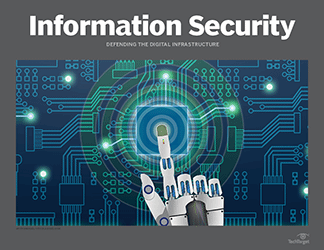PRO+ Premium Content/Information Security
Access your Pro+ Content below.
When cyberthreats are nebulous, how can you plan?

This article is part of the Information Security issue of November 2019, Vol. 20, No. 4
For security defenses to have any chance of working against cyberthreats, IT professionals need to stay on the offensive. One case in point: The increase in the types of security tools powered by AI and machine learning. These advanced technologies have definitely improved cyber-response capabilities, giving some hope to cybersecurity pros caught in a seemingly endless struggle to counter attacks on their vital infrastructure and data. But the dark side of AI must remain front of mind. AI can help security teams locate vulnerabilities in their systems. But it's important to remember that bad actors can also use it to locate vulnerable systems. Is AI a force for good or for evil? It all depends on whose hands it's in. This is no minor problem, either: Email predicting the exponential spread of AI-embedded devices hits my inbox on a weekly basis. For example, one recent message described a study by ABI Research, which projected that the number of AI-enabled devices will nearly double by 2024. With so much AI in our lives, on all ...
Features in this issue
-
-
Enterprises feel the pain of cybersecurity staff shortages
It's hard enough keeping up with today's threats on a good day. But when your IT organization is spread thin, especially in terms of cybersecurity staff, the challenges mount.
News in this issue
-
When cyberthreats are nebulous, how can you plan?
Security planning is tough when you're short-staffed and hackers have smart tech too. You'll need solid skills and, most of all, a willingness to use your imagination.
Columns in this issue
-
Report shows CISOs, IT unprepared for privacy regulations
Several data management principles are common across new and developing privacy regulations, but Internet Society reports that many U.S. organizations are falling behind.
-
CISOs, does your incident response plan cover all the bases?
Security incidents, let's face it, are essentially inevitable. How do you cover the key bases -- education, inventory, and visibility -- in planning for incident response?
